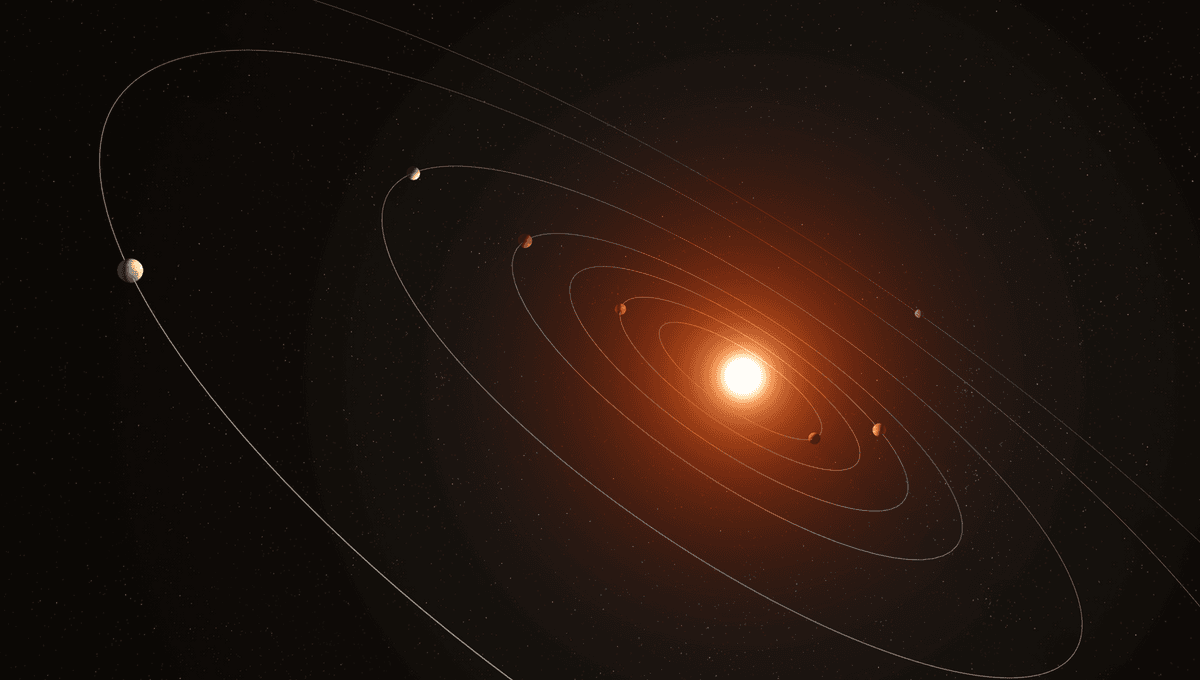
The first and second missions of NASA’s Kepler are long ended but astronomers continue to refine the data of the game-changing planet-hunting missions. Astronomers have gone through old Kepler data, creating the most precise list of exoplanets and candidate worlds – among them is the hottest seven-planet system yet.
At the center of this system, is the star Kepler-385, which is about 10 percent larger and 5 percent hotter than the Sun. Unlike the spread-out configuration of our own Solar System, these worlds orbit much closer to their star than Venus goes around the Sun, receiving a lot more light.
The first two exoplanets orbit in 10 and 15 days, respectively, have a radius slightly larger than Earth’s own, and are likely rocky. If they have an atmosphere, it is probably a thin one. The other five are larger objects but no giant planets. They are likely super-Earths, with twice the radius of our world, enveloped in a thick atmosphere.
“Our revision to the Kepler Exoplanet catalog provides the first true uniform analysis of exoplanet properties,” Professor Jason Rowe, from Bishop’s University, said in a statement. “Improvements to all planetary and stellar properties have allowed us to conduct an in-depth study of the fundamental properties of exoplanetary systems to better understand exoplanets and directly compare these distant worlds to our own Solar System and to focus in on the details of individual systems such as Kepler-385.”
All seven planets are well within the inner boundary of the habitable zone – they are just too hot to sustain life as we know it. However, the interest of astronomers was in the planetary arrangement of these seven worlds. Among the interesting properties, the innermost two and the outermost three are in resonance, and the planets’ rotational periods are synchronized, which was translated into a gorgeous sonification.
“While previous studies had inferred that small planets and systems with more transiting planets tend to have smaller orbital eccentricities, those results relied on complex models,” added Professor Eric Ford, from Penn State. “Our new result is a more direct and model-independent demonstration that systems with more transiting planets have more circular orbits.”
The catalog of planet candidates discovered by Kepler remains the largest and most uniform list of exoplanets produced. Current observatories will improve on that but these researchers are showing that Kepler’s data is still the benchmark for looking at exoplanets.
“We’ve assembled the most accurate list of Kepler planet candidates and their properties to date,” added Jack Lissauer, a research scientist at NASA’s Ames Research Center in California’s Silicon Valley and lead author on the paper presenting the new catalog. “NASA’s Kepler mission has discovered the majority of known exoplanets, and this new catalog will enable astronomers to learn more about their characteristics.”
The paper is accepted for publication in The Planetary Science Journal and available on arXiv.
Source Link: Scorching New 7-Planet System Discovered – And You Can Even Hear Them